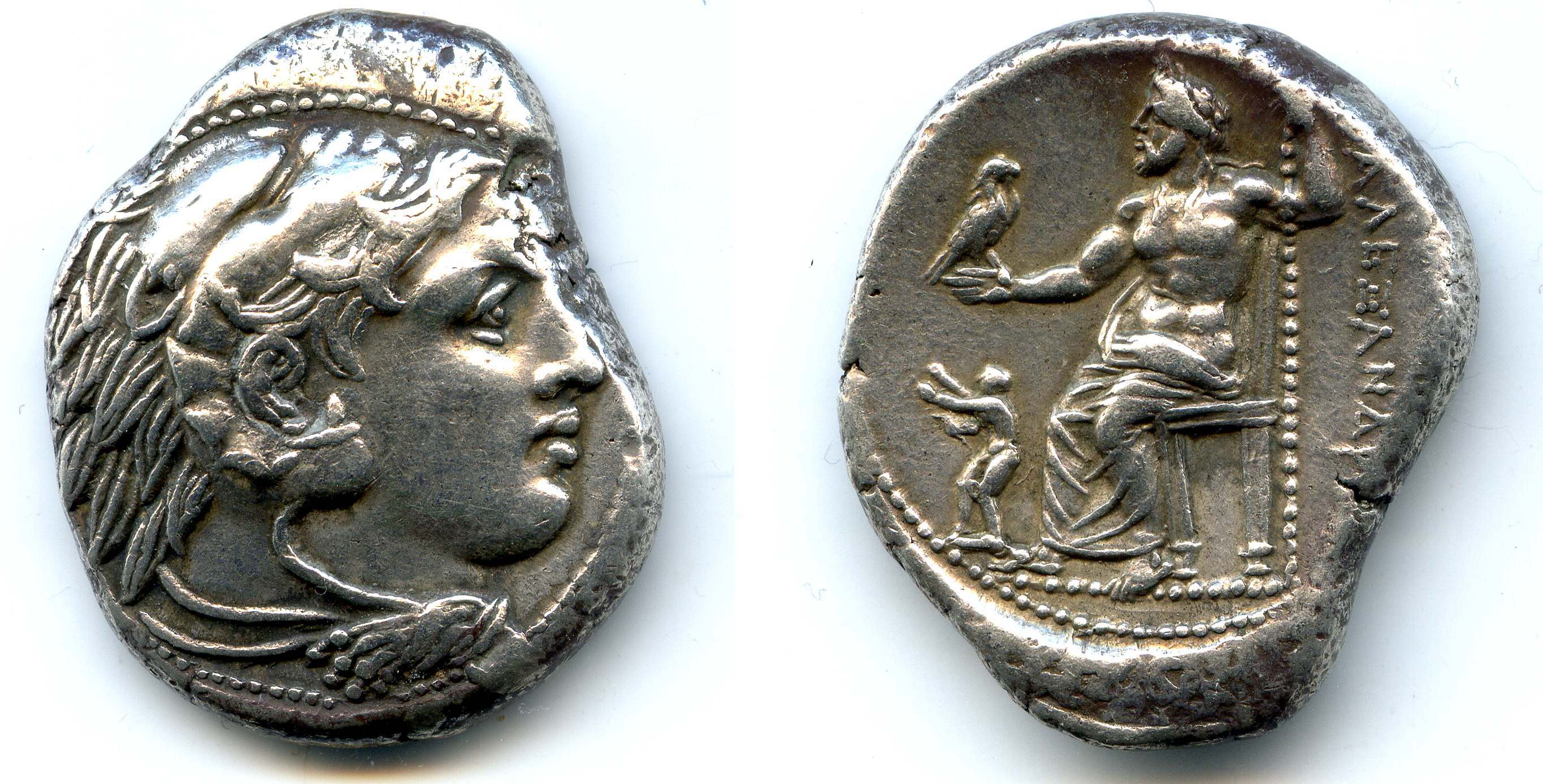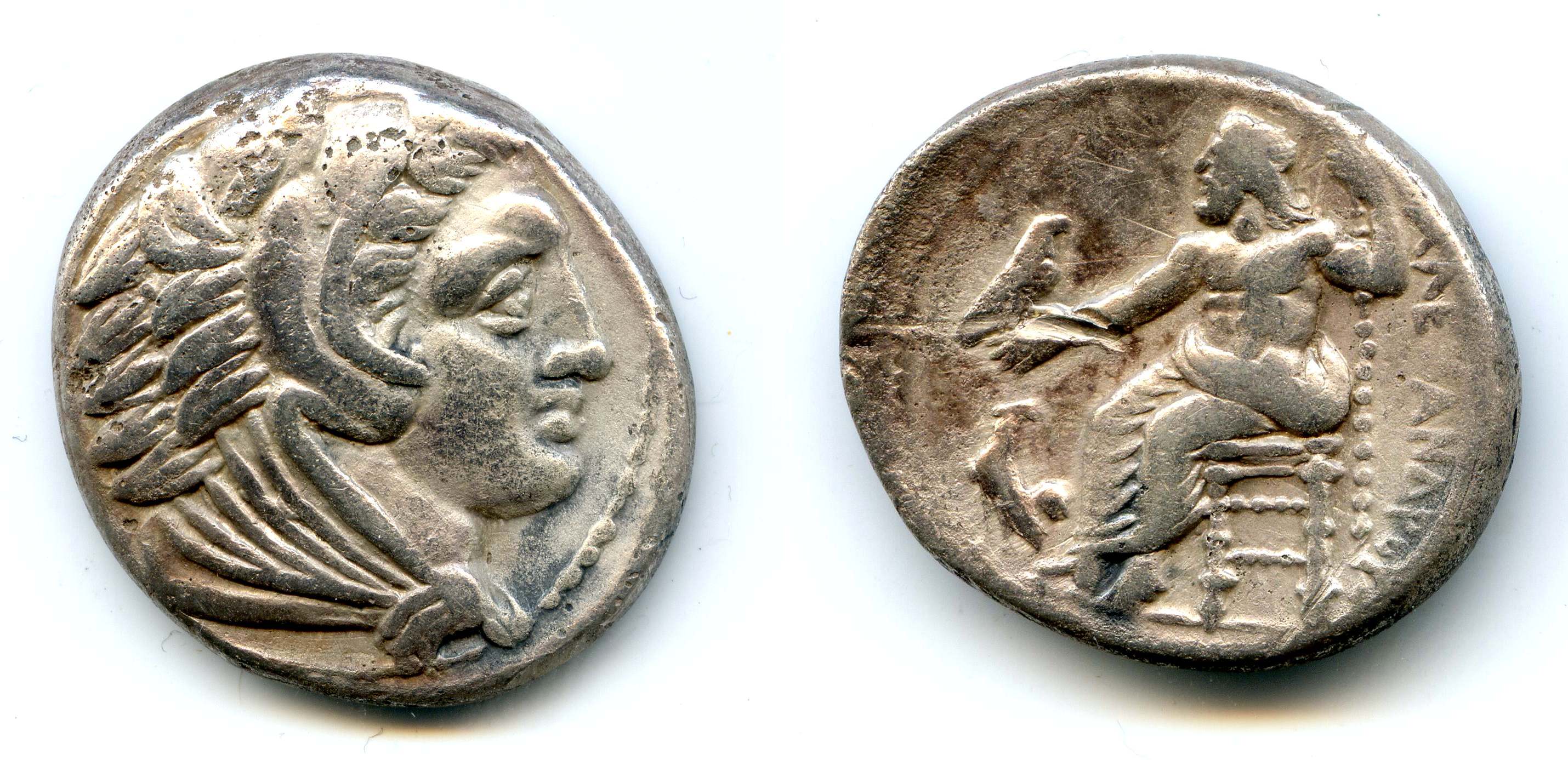Alexander III the Great
Born 356 B.C. , King of Macedonian Empire
336-323 B.C.

Silver Tetradrachm, 25.5 mm, 17.2 grams.
O: Head of young Herakles right, wearing a lion's skin.
R: Zeus seated left on backless throne, holding eagle and scepter.
In the left field, a herm. What's a herm?
Struck at Amphipolis, c.336-323 BC.

Silver Tetradrachm, 27 x 23 mm, 17.3 grams.
O: Head of young Herakles right, wearing a lion's skin.
R: Zeus seated left on backless throne, holding eagle and scepter.
In the left field, a nude boxer in Greek boxing pose.
Struck at Aegae, c. 336-323 BC.

Silver Tetradrachm, 25.5 x 24.5 mm, 16.9 grams.
O: Head of young Herakles right, wearing a lion's skin.
R: Zeus seated left on backless throne, holding eagle and scepter.
In the left field, a rooster.
Struck at Amphipolis, c.325-323 BC.